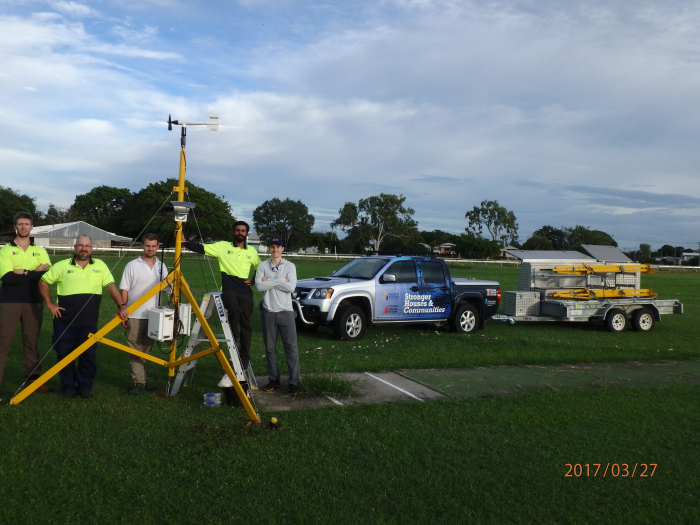





猛烈な熱帯低気圧デビーは、2017年3月28日正午にクイーンズランド州北部の海岸にあるエアリービーチの近くに上陸したカテゴリー4のシステムでした。強風の際にコミュニティに影響を及ぼす風場をより正確に特徴付ける継続的な取り組みの一環として、サイクロン試験ステーション(CTS)は、クイーンズランド大学の風力研究研究所の協力者とともに、デビーの上陸前にその地域にSWIRLnet(地表気象リレーおよびロギングネットワーク)気象ステーションを設置しました。6つのSWIRLnetタワー(影響を受ける可能性のあるコミュニティに設置された高さ3.2メートルの風速計)は、上陸前、上陸中、上陸後に継続的にデータを収集しました。エア/ホームヒル地域に3つのタワー、ボーエンに2つ、プロサーパインに1つ設置されました。さらに、CTSは、サイクロンイベント全体の画像を撮影するために、Campbell Scientific CCFC屋外フィールドカメラ2台を設置しました 。
サイクロン発生中、Campbell Scientific オーストラリア社が提供した 6 つの SWIRLnet ステーションが、Campbell Scientific CR1000 データロガーと RM Young 05106 海洋グレード風速計を組み合わせて 10Hz の風速データを記録しました。Campbell Scientific CS215温度および相対湿度プローブとヴァイサラ PTB110 気圧センサーが追加の気象情報を提供し、サイクロン発生中、風速、温度、相対湿度、気圧の測定値の 10 分ごとの要約が携帯電話接続を介してリモートでアップロードされました。
CTSが発表した予備的な強風災害評価報告書は、サイクロン発生から48時間以内に、サイクロン試験ステーション(ジェームズクック大学)、クイーンズランド大学、フロリダ大学の工学部教授と学生による現場およびメディアソースのコンテンツからまとめられた。この研究は、これらの機関が行っている実験研究を補完するものである。
CTS がその後発表した技術レポート (CTS 技術レポート No 63) では、全体的な被害評価研究を支援するために、SWIRLnet ステーションと CCFC カメラから収集されたデータが使用されました。SWIRLnet ステーションのデータにより、タワーが配備されたいくつかの場所では、局所的な風上サイトの影響が存在することが明らかになりました。乱気流、突風の強度と継続時間、サイクロン中に発生したさまざまな風上地形による変化に関する SWIRLnet データの詳細な分析は、構築環境におけるサイクロン風の特性をよりよく理解するために継続されています。CTS 技術レポート No. 63 は、CTS Web サイトの出版物セクションから入手できます: https://www.jcu.edu.au/__data/assets/pdf_file/0009/461178/TC-Debbie-report.pdf/_noproxycache。